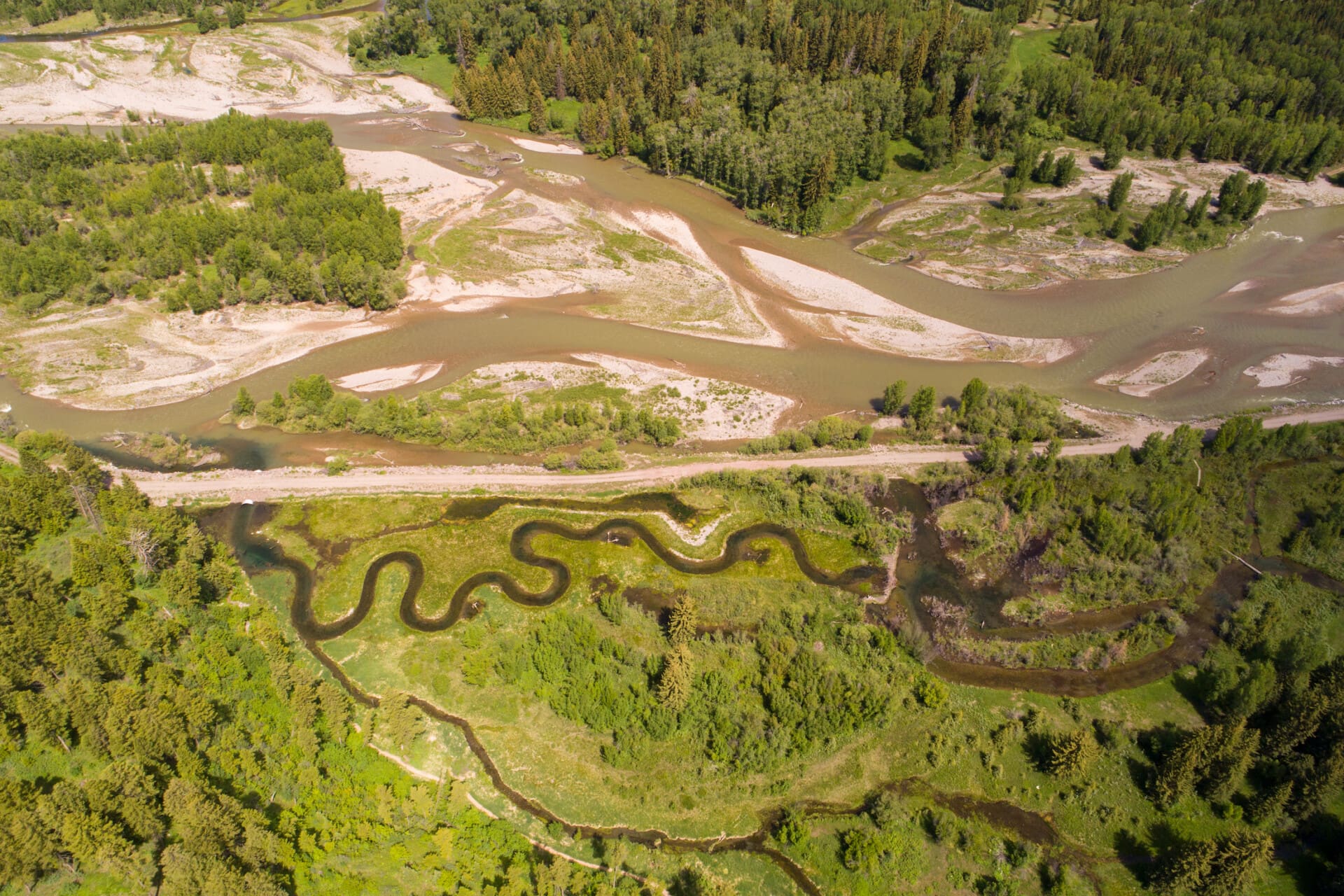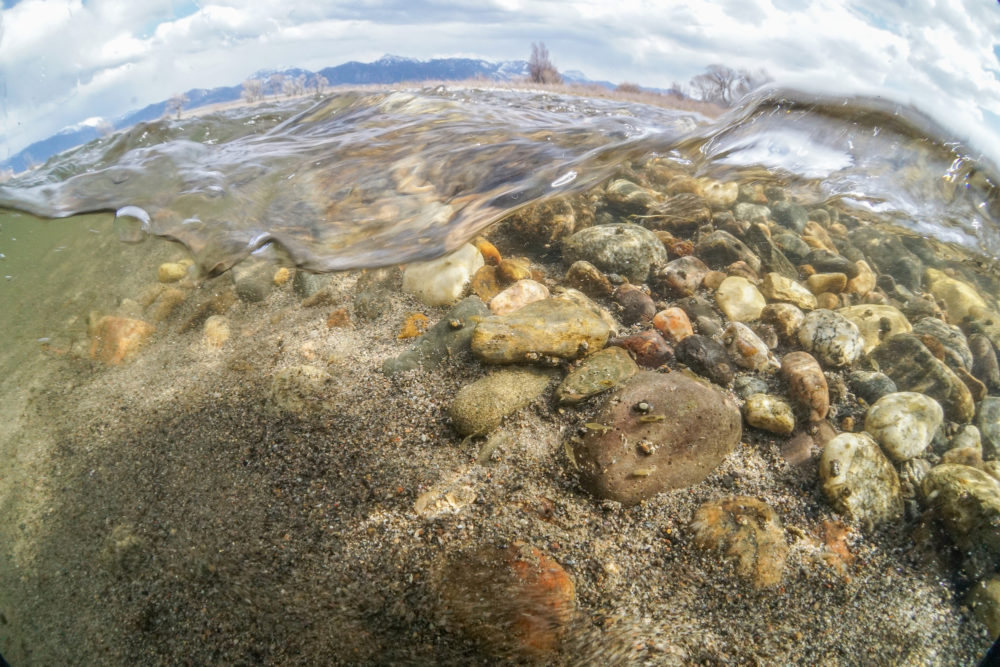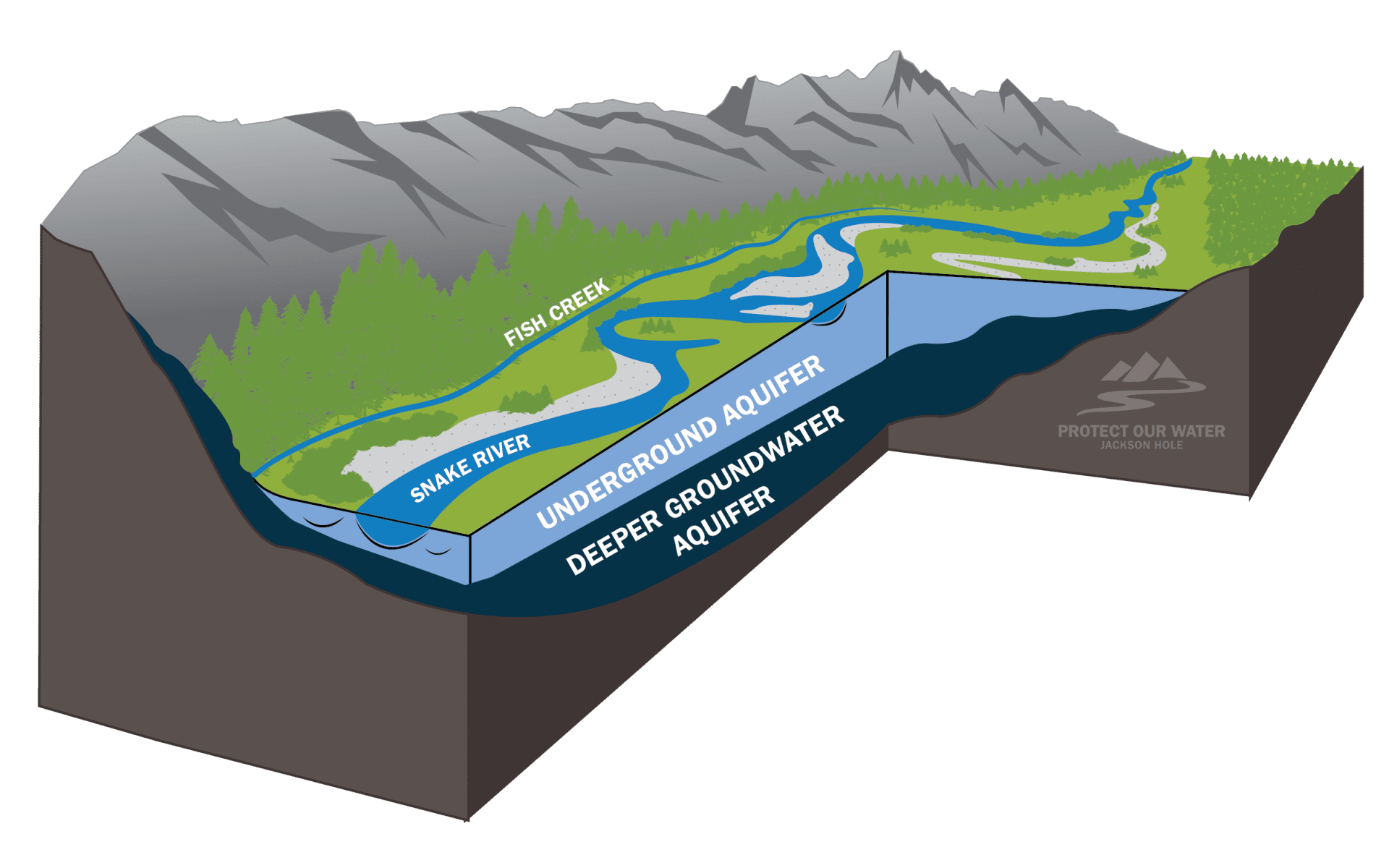
What is a Gravel Bed River System?
An Invisible River: most of the water in the Snake River is not in the river — it’s in the gravel.
A gravel-bed river doesn’t just flow down the channel. It flows over and through the entire flood plain system, from valley wall to valley wall.
Melting snow and surface water flow down the channel; this is what we think of as a “river.” But underground, far more water is moving slowly through a labyrinthine network of cobble, gravel and sand that make up the entire valley bottom.
Due to the cold, clear baseline conditions in our lakes, rivers, and creeks, it doesn’t take a large increase in temperature, nutrient levels, or other contaminants to impact the dynamic gravel-bed river floodplain ecosystem. Another important component of where we live is our groundwater, which freely exchanges with surface waters through the porous cobble and gravel that comprise our valley floor.




